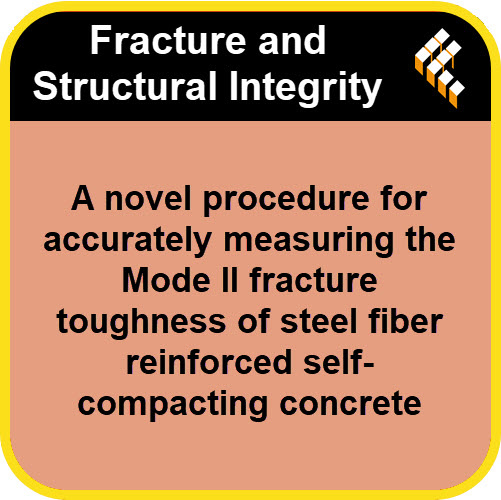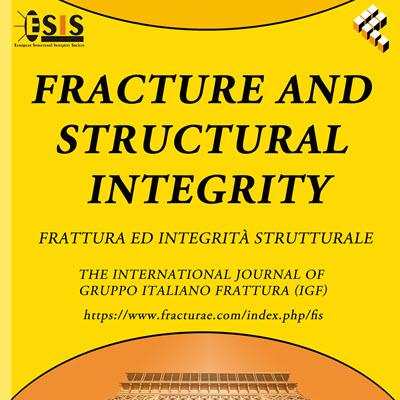Fracture and Structural Integrity: The Podcast
Stay at the cutting edge of fracture mechanics and structural integrity research with the official podcast of the Fracture and Structural Integrity journal. Join us for insightful interviews with top researchers, in-depth discussions of groundbreaking papers, and explorations of emerging trends in the field.
RSS Spotify YouTube Amazon Music
A novel procedure for accurately measuring the Mode II fracture toughness of steel fiber reinforced self-compacting concrete
2025-10-31
https://www.fracturae.com/index.php/fis/article/view/5628
Most research on the mode II fracture toughness of fiber-reinforced concrete (FRC) has intentionally avoided bridging fibers at pre-notch surfaces by using a through-thickness crack (TTC) that cuts the entire thickness, including fibers in this region. The objective of the present research is to accurately measure mode II fracture toughness (KIIC) using double-notched cube (DNC) specimens on steel fiber reinforced self-compacting concrete (SFRSCC). The effects of precrack-to-specimen width ratios (a/w), i.e., a/w = 0.3, 0.4, and 0.5, and fiber volume fraction percentage (Vf%), i.e., Vf% = 1% and 1.5% were investigated. A comparison between KIIC measured through specimens having the TTC concept, i.e., the absence of fiber bridging on the surfaces of the pre-notch, and those with the presence of fiber bridging on the surfaces of the pre-notch, i.e., the matrix crack (MC) concept. For greater clarity, the SCC specimens were cast without fibers with (MC/C) or without fiber bridging on the pre-crack surfaces to determine the unique effect of the presence of fiber bridging on the pre-crack surfaces on enhancing KIIC. The results showed that DNC specimens with MC consistently obtained the highest mode KIIC for all values of a/w, indicating the greatest resistance to crack growth. KIIC increased as the a/w ratio increased. MC/C method, i.e., the presence of fibers behind the crack front only, showed more effectiveness on the KIIC than the TTC, i.e., the presence of fibers ahead of the crack front only. In general, the MC is an accurate method for measuring KIIC of FRC.
DownloadFiletype: MP3 - Size: 3 MB - Duration: 14:05m (320 kbps 44100 Hz)
Powered by Podcast Generator, an open source podcast publishing solution | Theme based on Bootstrap
